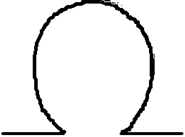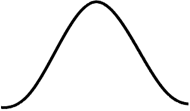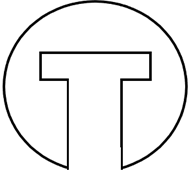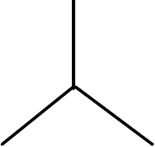This set of Nanotechnology Multiple Choice Questions & Answers (MCQs) focuses on “Nano-Optics – Meta Materials”.
1. Gyrotropic materials exhibit Epsilon negative media.
a) True
b) False
View Answer
Explanation: A gyrotropic or gyromagnetic material exhibits Mu – negative media which has a positive permittivity and negative permeability. The material has been modified by the presence of quasi – static magnetic field thus enabling the magneto – optic effect. The left and right rotating elliptical polarizations in these materials propagate at different speeds.
2. What is the full form of FSS metamaterials?
a) Fully Selective Surface – based
b) Flextronics Software Systems
c) Frequency Selective Surface – based
d) Fixed Frequency Response
View Answer
Explanation: FSS stands for Frequency Selective Surface – based metamaterials. These are alternative to fixed frequency metamaterials. FSS refrain signals in one waveband and allow those at another waveband. They give way for the optional changes of frequencies in a single medium rather than the restrictive limitations of a fixed frequency response.
3. Which metamaterials use split – ring resonators?
a) Plasmonics metamaterials
b) Microwave frequency metamaterials
c) Structural metamaterials
d) Subwavelength structured metamaterials
View Answer
Explanation: Microwave metamaterials use split – ring resonators. These metamaterials are constructed as arrays of electrically conductive elements (such as loops of wire) that have suitable inductive and capacitive features. In case of microwaves, these features are of the order of millimeters.
4. Which among the following properties is not exhibited by double negative metamaterials?
a) Radiation pressure
b) Reversal in the Doppler shift
c) Cherenkov radiation
d) ENG media with positive μr
View Answer
Explanation: Double negative metamaterials are substances having negative refractive index arising due to simultaneous (-ve) permeability and permittivity. The double negative metamaterials features anomalous refraction, radiation pressure, reversal in the Doppler shift and Cherenkov radiation.
5. How can the chiral tensor of bi – anisotropic materials be expressed?
a) κ = 3I + N + J
b) κ = N + J – (1 / 3) I
c) κ = (1 / 3) tr(κ)I + N + J
d) κ = (N * J) ÷ 3I
View Answer
Explanation: The chiral tensor of bi – anisotropic materials can be expressed as;
κ = (1 / 3) tr(κ)I + N + J,
Where tr(κ) is the trace, I is the identity matrix, N is a symmetric trace – free tensor and J is an anti – symmetric tensor. κ is the chiral tensor denoting chiral electromagnetic and reciprocal magneto – electric response.
6. Find out the incorrect statement from the following.
a) Frequency selective surfaces exhibit subwavelength characteristics
b) High impedence surfaces show inductive and capacitive properties
c) Chirality never contributes to the negative refractive index of metamaterials
d) Metamaterials are the only substances discovered that show negative refractive indices
View Answer
Explanation: Frequency selective surfaces (FSS) can exhibit subwavelength characteristics along with inductive and capacitive properties. FSS are also known as high impedence surfaces (HIS) and artificial magnetic conductors (AMC). Chirality can give rise to the negative refractive index of circularly polarized waves. Till date, metamaterials are the only materials to have exhibited a negative index of refraction.
7. Which of the following is not a metamaterials pattern?
a)

b)

c)

d)

View Answer
Explanation: It is possible to selectively engineer an enhanced effective material response at any frequency of wavelength and of any origin by tailoring the design of the metamaterials. The resonant response of a metamolecule can be determined by the inductance L and capacitance C of its metallic pattern that forms its base material.
8. 3D – chiral metamaterials exhibit polarization effects such as optical activity but refrain from displaying circular dichroism.
a) True
b) False
View Answer
Explanation: 3D chiral metamaterials exhibit chirality related polarization effects such as optical activity and circular dichroism. This phenomenon of circular dichroism involves the difference in absorption of left and right handed circular polarization.
9. Who was the first scientist to describe negative – index materials theoretically?
a) Victor Veselago
b) Winston E. Kock
c) Karl Ferdinand
d) John Pendry
View Answer
Explanation: The theoretical properties of metamaterials or negative index metamaterials were described by Victor Veselago in the 1960s. He was able to prove the transmission of light through these materials. He also showed that the phase velocity could be anti – parallel to Poynting vector for these materials.
10. Pick the wrong statement with respect to electromagnetic bandgap metamaterials (EBG).
a) It is possible to build an absolutely flawless EBG device.
b) EBGs prevent propagation of a certain bandwidth of frequencies
c) EBGs can work in ranges between a few GHz to few THz
d) Applications include transmission line and low – gain antennas
View Answer
Explanation: Electromagnetic bandgap metamaterials (EBMs or EBGs) are built in such a way that they prevent the propagation of a specific bandwidth of frequencies for certain arrival angles and polarizations. However it is impossible to fabricate an absolutely flawless EBG device. EBGs are produced for working in frequency ranges of a few gigahertz (GHz) to a few terahertz (THz), radio and microwave regions. These have also found potential application in transmission line and low gain antennas.
11. What expression can be used to determine the wavelengths of the resonances of metamolecules?
a) λ0 ≈ √ꜫ
b) λ0 ≈ 2/m
c) λ0 ≈ √ꜫ(2le/m)
d) λ0 ≈ √ꜫ(2lem)
View Answer
Explanation: The wavelengths of the resonances of metamaterials can be estimated by the equation: –
λ0 ≈ √ꜫ (2le/m)
where le is the total electrical length of the metallic pattern that forms the metamaterials, ꜫ is the relative permittivity of the dielectric medium that the pattern is embedded in, and m is a positive integer. Resonances with m > 4 are quite impossible to engineer in subwavelength metamolecules because le > λ0.
12. Yittrium iron garnet films allow the tuning of negative permeability.
a) True
b) False
View Answer
Explanation: A tunable metamaterial has variable response to an electromagnetic wave incident on it. Usually, the lattice structures of tunable metamaterials are adjustable in real time, making it possible to reconfigure a metamaterial device during operation. Yittrium iron garnet films are good examples of tunable metamaterials. They permit the continuous tuning of negative permeability that in turn allows for a tunable frequency range.
Sanfoundry Global Education & Learning Series – Nanotechnology.
To practice all areas of Nanotechnology, here is complete set of 1000+ Multiple Choice Questions and Answers.
If you find a mistake in question / option / answer, kindly take a screenshot and email to [email protected]
